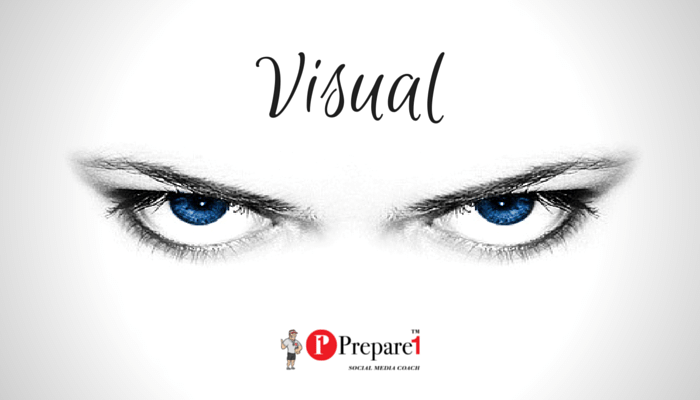
Are you creating visual content to help you and your brand stand out?
Did you realize in this noisy world that visual content marketing is helping brands stand above the competition?
The way people consume content is radically changing. As a marketer, you must adapt your content marketing strategy to remain relevant.
This past year, we’ve seen the importance of visual content in social media emphasized by the changes that occurred across almost every major social network, including Facebook, Twitter, LinkedIn, Google+, Instagram, and Pinterest. At the same time, both video and infographics have become powerful tools for brands looking to communicate more easily with their readers.
WHY VISUALS
- The average person gets distracted in eight seconds, though a mere 2.8 seconds is enough to distract some people.
- 81 percent of people only skim the content they read online. (Usability expert Jakob Nielsen has written that the average user reads at most 20 to 28 percent of words during an average visit.)
- People form a first impression in a mere 50 milliseconds.
- An estimated 84 percent of communications will be visual by 2018.
- An estimated 79 percent of internet traffic will be video content by 2018.
- Posts that include images produce 650 percent higher engagement than text-only posts.
- People are 85 percent more likely to buy a product after viewing a product video.
- Posts with videos attract 3X more links than text-only posts.
- Tumblr’s active user base has grown by 120 percent.
- Pinterest’s active user base has grown by 111 percent.
- Instagram’s active user base has grown by 64 percent.
GENERAL VISUAL CONTENT STATS
COLOR
Color captures attention, enhances productivity, improves communications and helps boost sales.
- Color emphasizes critical information and conveys a sense of professionalism.
- Color increases readers’ attention spans and recall by 82%.
- Color gains readership by 80%.
- Color makes an impression that is 39% more memorable.
- Telephone listings printed in color can increase response by 44%.
- People are 55% more likely to pick up a full-color piece of mail first.
STATS
- 46% of marketers say photography is critical to their current marketing and storytelling strategies. (Source)
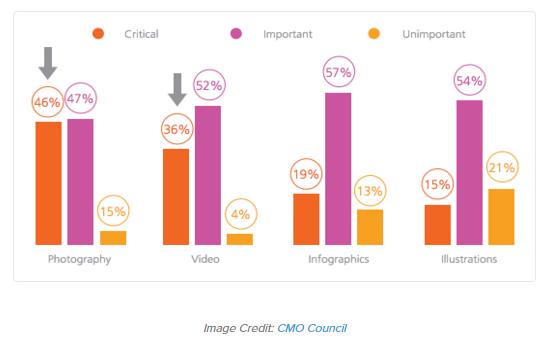
- 65% of senior marketing executives believe that visual assets (photos, video, illustrations and infographics) are core to how their brand story is communicated. (Source)
- Researchers found that colored visuals increase people’s willingness to read a piece of content by 80%. (Source)
- 34% of marketers selected visual assets as their most important content, behind blogging (45%) and before videos (19%). (Source)
- Content with relevant images gets 94% more views than content without relevant images. (Source)
- Only 27% of marketers have a process in place to aggregate, organize, and manage the visual assets being used across their marketing teams. (Source)
- 73% of content creators plan to prioritize creating more engaging content in 2016, and 55% plan to prioritize creating visual content. (Source)
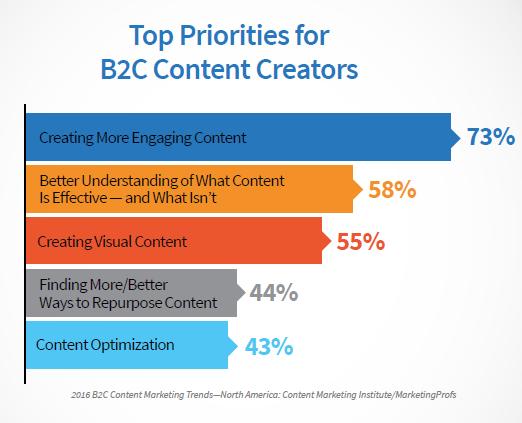
Source: Hubspot
VIDEO STATS
Video statistics released by Invodo for 2014 provide insights useful for businesses of all sizes. Notably, this report summarizes data from a number of major industry sources, thus increasing confidence and reliability. Some of the major points which have garnered attention in the C suite are:
- Shoppers who view video are 1.81 times more likely to purchase than non-viewers
- 51.9 percent of marketing professionals worldwide name video as the type of content with the best ROI
- Retailers cite 40 percent increases in purchases as a result of video
- In an eye-mapping study of search engine results pages (SERPs), video results commanded more attention than other listings
- 64 percent of people in the US own a smartphone
- Mobile shoppers are 3 times as likely to view a video than desktop shoppers
- 57 percent of smartphone owners watch product video in stores
Statistics to Consider
- Midway through 2015, mobile video plays exceeded 44% — up 74% from 2014 and up a whopping 844% since 2012. (Source)
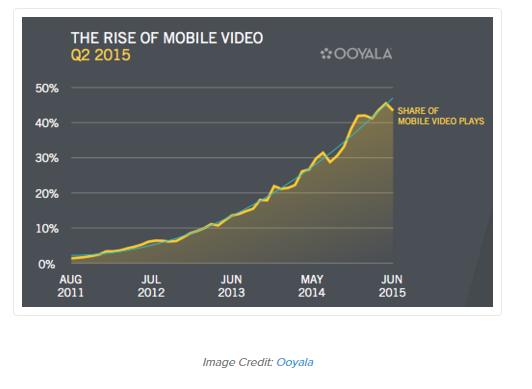
- Between April 2015 and November 2015, the amount of average daily video views on Facebook doubled from 4 billion video views per day to 8 billion. (Source)
- Using the word “video” in an email subject line boosts open rates by 19%, click-through rates by 65% and reduces unsubscribes by 26%. (Source)
- 51.9% of marketing professionals worldwide name video as the type of content with the best ROI. (Source)
- In Q2 of 2015, mobile phones (34%) and tablets (15%) combined for 49% of video ad impressions — up from 38% in Q1 of 2015. Publishers saw PC impressions drop from 62% to 50% in the previous quarter. (Source)
VISUAL CHALLENGES
Despite the clear importance of visual assets and the significant budget being allocated to the creation and acquisition of these assets, marketers are facing key obstacles and challenges in maximizing them to further engage their audiences and tell a cohesive, consistent story that will be the most impactful one possible.

CONTENT DEVELOPMENT STRATEGY
A key piece of being able to develop a strong visual storytelling platform is the centralization of the overarching content development strategy. This is a structure in which a singular strategy defines the content and messaging that is created, and individual teams then develop content products to meet the expectations of the audiences—and channels—for which they are responsible.
However, according to recent studies indicate that just over one-third of marketers have achieved such a system. Unfortunately, this leaves some 60 percent of marketers fending for themselves, with individual contributors defining their own content marketing strategies and establishing their own development cycles in a silo.
- Thirty-two (32) percent of this group relies on individual teams to simply create content as it is needed in order to engage with a specific customer segment or group. All too often, this can create a vacuum within the organization where content is constantly being generated based on individual need (or whim), with little understanding of investments that may have already been made in the overall content itself or in key visual assets being leveraged to elevate the experience or engagement.
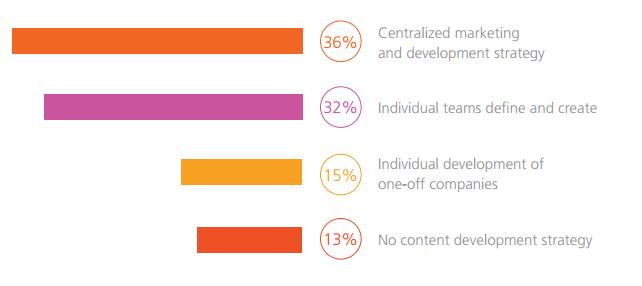
Bottom line: Visuals are memorable and effective, because they help people process, understand, and retain more information more quickly.
How do you use visuals in your content marketing?
JOIN US FOR OUR UPCOMING
SOCIAL MEDIA SEMINAR SERIES
20% OFF EARLY BIRD
- Visual Content for Business – How to get your business to stand out – Mar.10th
About Blair

Blair Evan Ball is a Social Media Coach and founder of Prepare1, a company that works with businesses, individuals and non-profits. He is a former executive with a Fortune 50 company, and his national division did $1Billion+ in sales annually.
Blair has written three e-books: Facebook for Business Made Easy, Facebook Pages for Business Made Easy, and WordPress Blog Setup Made Easy.
Blair also educates, trains entrepreneurs and business professionals how to amplify their brand, increase revenues, and raise more funds.
![[Study] How Will Businesses Change Their Social Media Activities 5 Golden Rules for Sharing on Social Media](https://www.prepare1.com/wp-content/uploads/2014/03/COACH-logohat-162x300.jpg) The Race is ON! | PREPARE | Get into the Game and WIN!
The Race is ON! | PREPARE | Get into the Game and WIN!











Comments on this entry are closed.
{ 1 trackback }